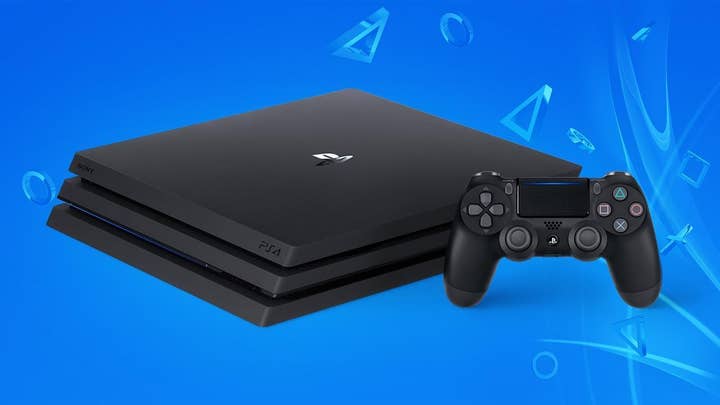What is the elevator pitch for a PS5 Pro? | Opinion
Without the 4K upgrade to justify its existence, Sony’s new hardware may struggle to explain itself to consumers
Sign up for the GI Daily here to get the biggest news straight to your inbox
A few weeks ago, I wrote about the unusual situation we’ve found ourselves in regarding console hardware – with the Nintendo Switch on one hand being seriously strained by an over-long tenure (despite being pretty low-powered when it launched), while the current Xbox and PlayStation consoles are technically into the latter half of their cycles but feel much newer due to the ripple effects of pandemic-era shortages.
One update strongly rumoured to be in the pipeline at that point was a PS5 Pro model, which most people expected to see sometime in mid-2025.
Now we have a lot more clarity on Sony’s hardware plans, thanks to the fairly inevitable leaking of technical documents about the Pro which were released broadly to the company’s development partners a few days ago. A PS5 Pro is on the way, codenamed Trinity, and will mostly replicate the hardware strategy of the PS4 Pro last generation, being primarily a bump to the GPU specifications.
I’ll leave the analysis of the actual hardware to the likes of Digital Foundry; to my mind, the most interesting aspect of this leak from a business perspective wasn’t the specifications (though they’re certainly relevant), but rather the projected launch date, with Sony planning to get this device onto shelves in time for holiday 2024.
That’s a fair bit earlier than most people were expecting. It probably puts the console head-to-head with a similar spec bump and redesign for Microsoft’s Xbox Series X – which may be the point, since in the absence of the expected Switch 2 debut this year, Microsoft seemed to have a clear run at Christmas with its new hardware.
The reality is that, with some exceptions, the PS5 doesn’t have many games that are pushing its limits; the advantages of a Pro console will be harder to see as a consequence
More importantly, I think, it makes the PS5 Pro’s pitch a little more murky. I assumed, like a lot of people, that the new spec-bumped hardware would be launched pretty close to GTA 6, which is probably going to be one of the biggest entertainment industry launches in history. That would unquestionably be a good business move, since plenty of people will be keen to have the best possible hardware to play their once-in-a-decade GTA release.
It now seems, though, that PS5 Pro will be on shelves many months ahead of our expected release window for GTA 6. That doesn’t make it impossible for Sony to tie the new console to GTA 6 when Rockstar’s opus finally does arrive, of course – a bundle and a high-profile marketing campaign about it being the best hardware for the game seems almost inevitable – but it does give us a separate launch window for the device in which the PS5 Pro will have to justify its existence in some other way. I’m not convinced that "buy it now to make sure you’re ready for GTA 6 next year" is a winner in terms of marketing messages (though I suppose consumers burned by the disastrous supply chain issues and scalping problems around the original PS5 might be keen to grab stock while they can).
The process of explaining to consumers why they should buy this relatively subtly upgraded, but probably notably more expensive console, is going to be a tricky one in the absence of a major game that the marketing can point to as a justification for the upgrade.
I’ve pointed out before that the PS4 Pro justified its existence in a very straightforward way: many consumers had upgraded to 4K displays in the preceding years, and the Pro delivered a version of the PS4 that could support those displays. It ended up accounting for something like 15% of the PS4’s sales volume; not earth shattering, but a nice uplift for a console well into the back half of its lifecycle. The offering to consumers made perfect sense, and didn’t devalue the existing hardware in any way; PS4 was still absolutely the current console, but there was a Pro model for people who had bought fancy new TVs and wanted to make the most of them.
I’m certain that there’s an audience for a PS5 Pro at this point in the cycle – myself included
I’m certain that there’s an audience for a PS5 Pro at this point in the cycle – myself included, though the analysis suggesting that this will be a fairly modest upgrade that doesn’t solve some of the more pressing performance bottlenecks on the system has given me pause.
However, I also think we underestimate how much of a stumbling block the messaging may be for this device. There hasn’t been a major change to display technology, so that explanation is out the window. Sony doesn’t have any major games in its pipeline this year, by its own admission, so a "for the best possible experience in this huge game you’re hyped for..." style of marketing campaign is out the window (even if that strategy will probably be revisited later for GTA 6).
The company is left with a slightly awkward admission that’s tricky to spin into an appealing message: PS5 doesn’t perform terribly well in certain games, especially with ray-tracing enabled, and this new Pro hardware should improve visual quality and frame-rates in those games. How do you create messaging around a device aiming to fix that issue without implicitly denigrating the console that tens of millions of existing players have under their TVs?
In some fields, of course, that’s a solved problem – everyone expects new smartphone hardware every year, for example – but we’re not past the general expectation that consoles are a fixed target, a device that you can invest in that will give you a certain number of years before being superseded. PS4 Pro avoided upsetting that paradigm by using 4K displays as a figleaf. Microsoft proposed upending the paradigm entirely with a regularly updated, moving-target kind of console hardware line-up, and then promptly didn’t do anything of the sort. But while it seems to be pretty conservative in hardware terms, the PS5 Pro is actually going to tread some unusual new ground in marketing and messaging terms.
I don’t think the real concern here is that existing PS5 owners (or potential purchasers) think to themselves, "oh great, I guess the OG console is just chopped liver then" and sour on Sony’s offering overall. Rather, it’s the risk that the Pro – robbed of a new display technology to justify itself, and seemingly constrained by technical limitations of the PS5’s CPU architecture – simply won’t impress in a way that’s really noticeable to most consumers.
It’s very, very early to be making this judgement, of course, and there are wildcards on the table, especially in the form of Sony’s proposed proprietary upscaling technology; but based on these early specs at least, the jump from PS5 to PS5 Pro seems less significant than it was from PS4 to PS4 Pro, and this is coming in a generation where diminishing returns from graphics technology have been felt more painfully than ever.

It’s not that it isn’t fine for a Pro console to be a relatively niche device – only 15% of the PS4 market, after all – but rather that there’s a significant brand risk that comes with a narrative of disappointment around the device that’s meant to be your high-end flagship. PS4 Pro was a niche device but it was generally appreciated by the people in that niche; most people didn’t need or want it, but people who did buy the Pro model tended to be very positive about it. Perhaps PS5 Pro will do the same, but at the moment it feels like a much more niche product than PS4 Pro was – not just because of concerns that its additional power will mostly apply to edge cases in performance, but also for reasons external to the hardware itself.
The reality is that with some high-profile and much-lamented exceptions, the PS5, after a COVID-extended period of developers supporting PS5 and PS4 alongside each other, doesn’t really have that many games that are pushing the limits of the system right now; the advantages of a Pro console will be harder to see as a consequence.
In short, it’s not hard to envisage a negative narrative developing around the Pro if average consumers can’t really see the difference in game performance and fidelity – either because the hardware itself isn’t enough of a jump forward, or because the games that need enhanced hardware just aren’t numerous or significant enough. Coming at a time when Sony’s first-party pipeline seems to have fumbled the ball for the first time in many years, that could be an unfortunate blow to the brand’s image at a pretty delicate point in its history.
Explaining to consumers why they should buy PS5 Pro is going to be tricky in without a major game that the marketing can point to as a justification for the upgrade
None of this means that Sony shouldn’t be launching this update; just that their choice of how to position and market it is going to be insanely important, even more so than usual.
Another wildcard that we have absolutely no idea about is what they do in terms of physical design; a bold, interesting industrial design for the Pro console could make up for a lot of concerns in other regards. PS4 Pro was very conservative in this regard, just adding another ‘layer’ to the PS4’s existing design, but Sony has done more dramatic things with mid-cycle hardware refreshes in the past, and it would be great to see it push the envelope a little with this one – perhaps harking back to something of the hi-fi equipment aesthetic, in line with the Pro moniker, or at least offering something that really makes the updated hardware stand out from the existing models.
The die is cast in terms of what the PS5 Pro will do; but what it will look like, how it will be positioned, and how it will be presented to the public are all yet to be decided, and those things will play an equal if not a greater role in the success of this new model in the PlayStation family.
Sign up for the GI Daily here to get the biggest news straight to your inbox









